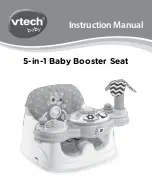
7.1
- PROCEDURE FOR CRANKSET CLEANING AND LUBRICATION
• Before lubricating, carefully clean the drivetrain (system, sprocket pack, chainrings
and rear derailleur wheels) with a brush or cloth soaked in a specific degreaser/deter-
gent. In the case of dust or mud, remove any residuals with specific plastic tools.
• Dry the drivetrain with a soft cloth: never use abrasive sponges or metal scouring
pads.
• Carefully lubricate the components, using a specific chain lubricant.
• After application, turn the hand cranks using all the possible gear combinations in
order to properly lubricate the entire drivetrain.
• Carefully clean any remaining lubricant remaining on the bicycle or the floor.
• At the end of the lubrication operations, CAREFULLY degrease the braking rim and
the brake blocks.
WARNING!
Residual lubricant on the rims and the brake blocks can reduce or cancel out the
braking performance of your bicycle and be the cause of accidents, physical injury or
death.
• Do not expose the products to high temperature, do not leave them closed in cars
parked under the sun, do not keep them near radiators or other heat sources, do not
leave carbon or plastic products in direct sunlight.
7 -
MAINTENANCE / LUBRICATION / CLEANING
• The duration of the components is variable based on the conditions of use, frequency
and quality of maintenance. For proper component maintenance, it is necessary to fre-
quently perform the cleaning and lubrication operations, especially under conditions
of heavy use (e.g. each time after washing the bicycle, after use in wet conditions, on
dusty or muddy roads etc.).
• Check chapter 8 to determine the frequency with which you should have maintenan-
ce performed on your components by a specialised mechanic: Period maintenance.
• Dirt seriously damages the bicycle and its components. Wash, clean and dry your
bicycle carefully after use.
• Never spray your bicycle with water under pressure. Pressurized water, even form
the nozzle of a small garden hose, can pass under seals and enter your Campagnolo
components, thereby affecting its operation. Wash your bicycle and Campagnolo
components by wiping them down with water and neutral soap.
WARNING!
Salty environments (such as winter roads or roads near the sea) may lead to gal-
vanic corrosion of most of the bicycle's exposed components. To prevent damage,
malfunctions and accidents, rinse, dry and carefully re-lubricate all components
which are subject to this phenomenon.
ENGLISH
32
ENGLISH
33



























